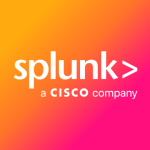We use this solution for end-user experience, infrastructure monitoring, analysis of bounce rates, service calls to the database, root cause analysis, and problem management. For end-user analysis, I can monitor where the connections come from, the time, the number of navigated pages, bounce rates, and finally, if the usage was satisfactory or not.
This solution has improved our organization in several ways, including the speed of detecting problems, predictive maintenance, root cause analysis, and alert generation. We are also better able to understand trends with respect to user behavior like time zone connections, and the times when there is less usage of the system by users.
Our organization is too IT oriented. I think with Dynatrace, it has helped to bring value to the business because now we can speak using the same language.
The most valuable features for me are end-user analysis and problem detection. I am responsible for adoption, availability, and performance. In the case of adoption, the number of new users coming to the system is a good metric for management. For problem management, problem detection is a good feature to save time.
I have reported a bug where a CI was not reflected in the dashboard, yet it was detected in the problem management.
On the side of the end user experience, I would suggest adding a new service for analyzing the backtrace of users.
Also, I would like to see an option to export the dashboard to create better reports and avoid copy/paste.
Between one and two years.
In terms of stability, it is ok and we have had no issues reported so far.
We cannot properly address scalability yet.
Prior to this solution, we used Gomez. It was part of the original solution that was installed. We had many problems with synthetic monitoring because it was down most of the time.
The tools were installed before I joined the company.
There are long term benefits in using the monitoring tool. There is also strategic value added, as is the case of transforming the internal language of the technical teams.















